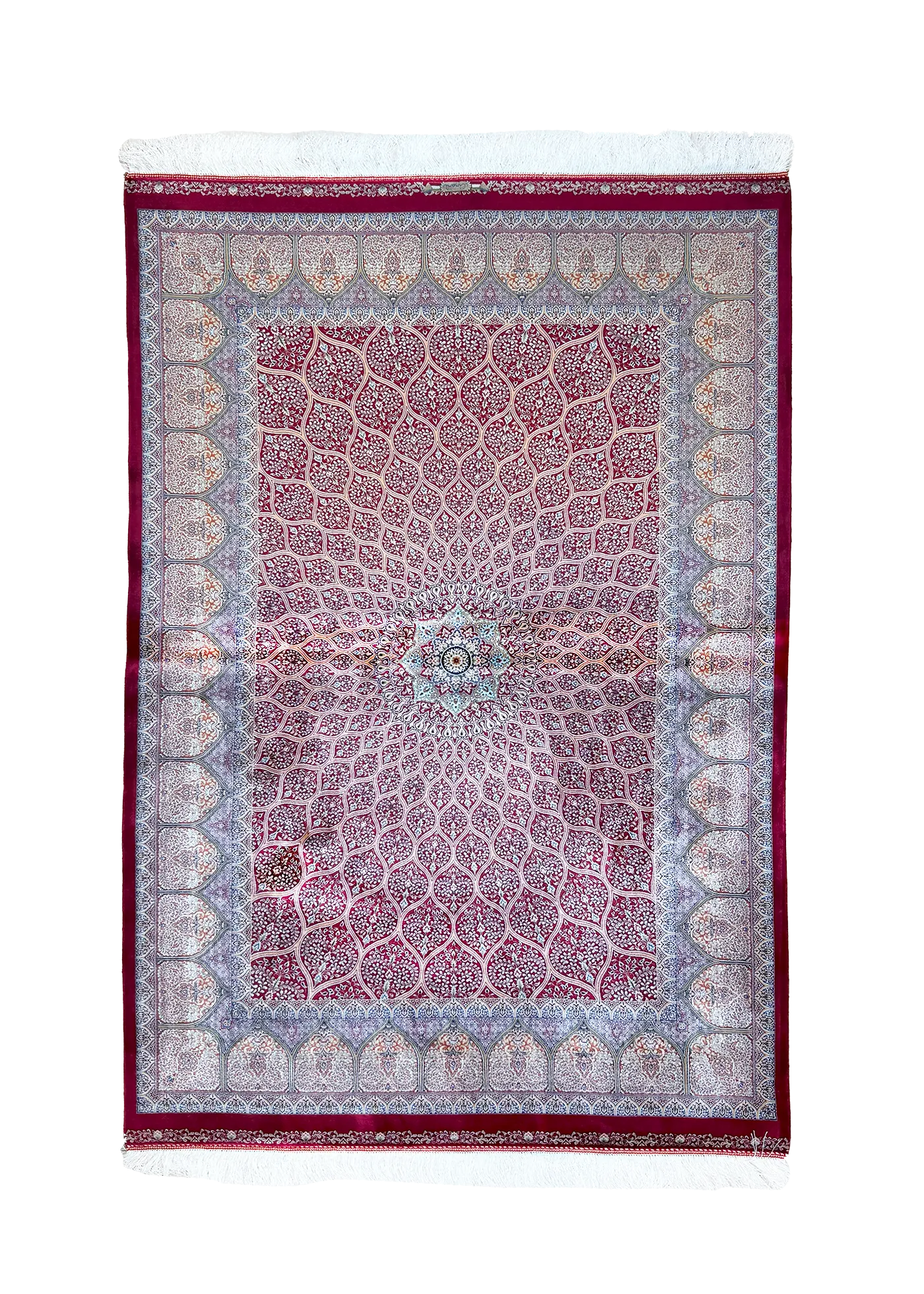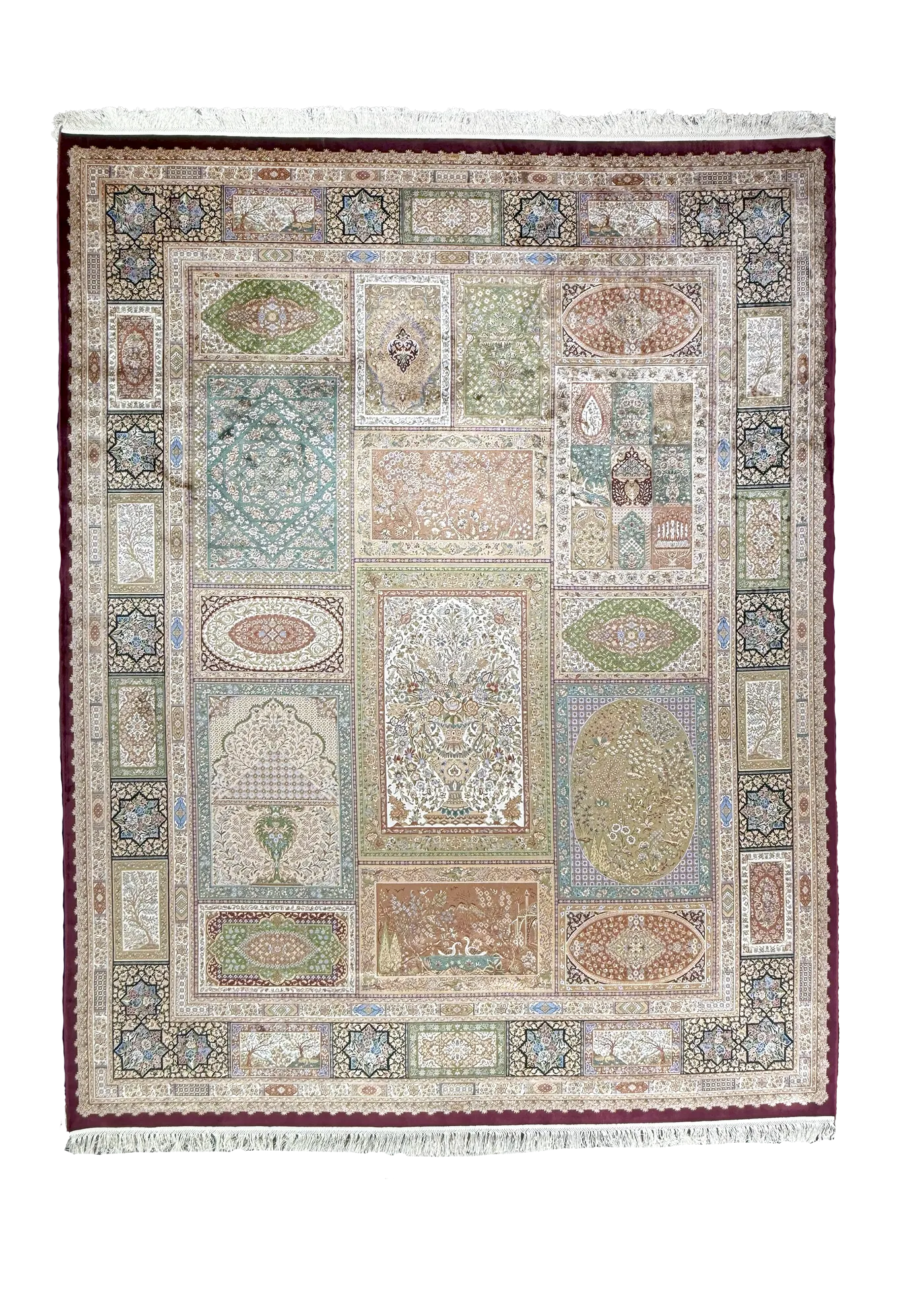Persian Rug vs Turkish Rug
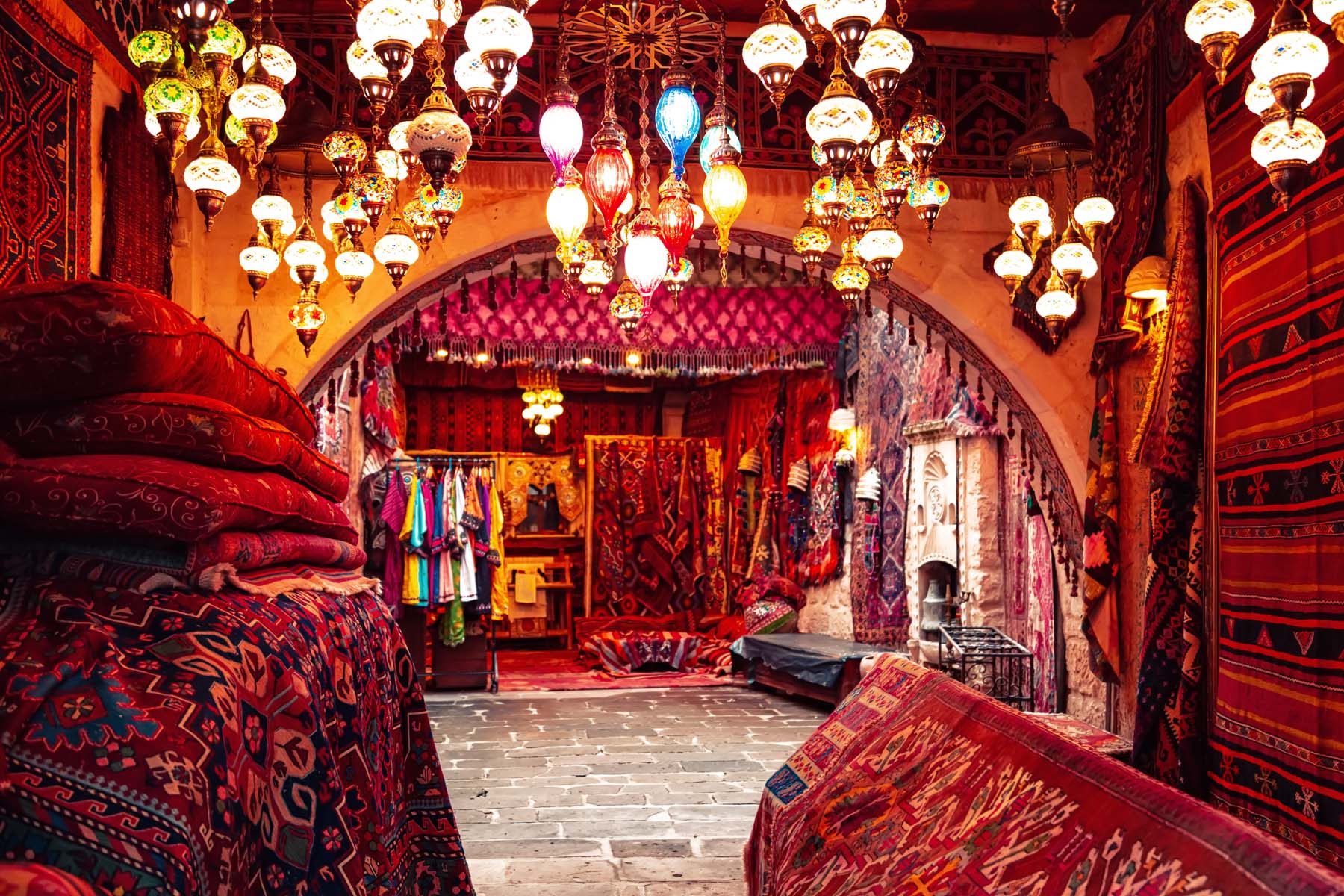
Imagine a rug that turns your living room into a storybook, its patterns whispering tales of ancient artisans. Is it a Persian style rug or a Turkish rug? Both dazzle with unique beauty.
Each rug tells a distinct story, from Persia’s floral elegance to Turkey’s bold geometry. This article explores the origins, designs, and craftsmanship of Persian style rugs and Turkish rugs. Discover their differences and find inspiration in our Traditional Persian Rugs Collection.
A Tale of Two Traditions – Origins of Persian and Turkish Rugs
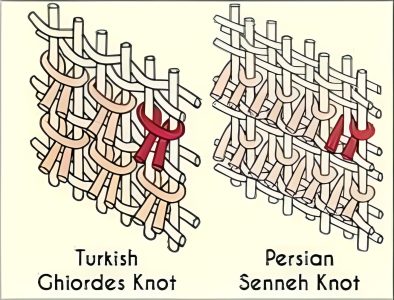
Persian Rug vs. Turkish Rug
Persian style rugs began in ancient Persia, with weaving traditions spanning centuries. By the Safavid era (1501–1732), Tabriz and Isfahan weavers created rugs for royal courts.
These rugs blended art and function, adorning grand palaces. Marla Mallett, in Woven Structures, calls them “textile masterpieces reflecting cultural sophistication” (p. 23).
Turkish rugs sprang from Turkey’s nomadic tribes and Ottoman workshops. By the 13th century, Konya weavers crafted rugs for homes and mosques.
Their bold patterns reflect a rugged spirit. Mallett describes Turkish rugs as “vibrant expressions of tribal identity” (p. 23).
Both traditions cherish craftsmanship, but their origins differ. Persian rugs embody imperial grandeur, while Turkish rugs carry nomadic soul. This foundation shapes their unique aesthetics, which we’ll explore next.
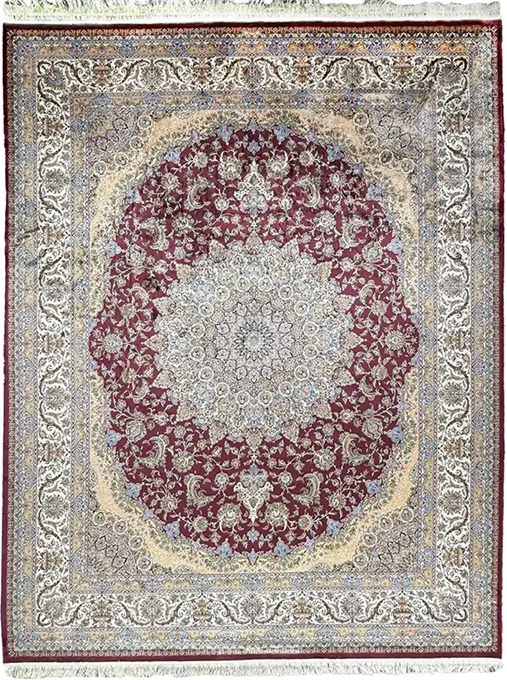
A large Persian rug with floral motifs in rich reds, crafted with bamboo silk by Afra Rugs.
Patterns and Designs – What Sets Them Apart
The charm of a Persian style rug lies in its intricate patterns. Floral motifs, medallions, and arabesques shine in vibrant reds, blues, and creams.
Kashan and Tabriz designs feature central medallions with scrolling vines, evoking paradise gardens. Mallett notes, “Persian rugs often use curvilinear patterns, reflecting a poetic aesthetic” (p. 45).
These rugs feel like delicate paintings. Turkish rugs, by contrast, embrace geometric boldness.
Stars, diamonds, and hooked patterns define rugs from Bergama or Usak. Their earthy reds, browns, and blues feel grounded.
Mallett highlights their “striking, simple shapes” (p. 47). Turkish rugs exude rustic charm.
| Feature | Persian Style Rugs | Turkish Rugs |
| Motifs | Floral, medallions, arabesques | Geometric, stars, tribal hooks |
| Colors | Vibrant reds, blues, creams | Earthy reds, browns, blues |
| Complexity | Curvilinear, intricate | Linear, bold simplicity |
| Regions | Tabriz, Kashan, Isfahan | Konya, Usak, Bergama |
Caption: Key differences in Persian style rugs and Turkish rug designs, showcasing their unique aesthetics.
Your space guides the choice. A large Persian rug elevates a formal living room, while a Turkish rug warms a cozy den. Let’s see how craftsmanship brings these designs to life.
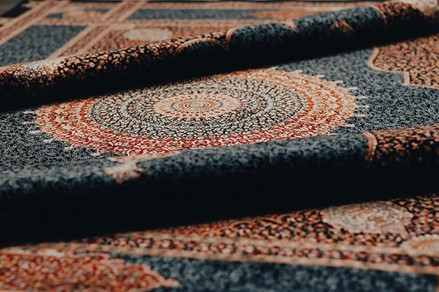
A close-up shot of a rolled carpet with a prominent circular medallion design in shades of red, orange, and cream against a dark background.
Craftsmanship and Techniques – A Closer Look
Craftsmanship shapes both Persian style rugs and Turkish rugs, but their techniques differ. Persian weavers use an uneven knot, called the Senneh knot, for intricate designs.
This knot allows fine detailing, perfect for floral patterns. Mallett explains, “The Persian knot supports detailed artistry” (p. 67).
Afra Rugs crafts Persian style rugs with bamboo silk, adding a modern, luxurious touch. Traditional Persian rugs often used silk or wool.
Turkish weavers use a symmetrical knot, known as the Ghiordes knot, for bold geometric patterns. This knot ties quickly and ensures strength.
Mallett notes its “durability, perfect for nomadic life” (p. 72). Turkish rugs, typically woven with wool, feel textured and robust.
Key Features of Persian Style Rugs vs. Turkish Rugs:
- Persian Knot: Asymmetrical, enabling intricate floral designs.
- Turkish Knot: Symmetrical, ideal for geometric patterns.
- Weaving Centers: Persian rugs from urban workshops; Turkish rugs from villages.
- Materials: Afra Rugs uses bamboo silk for Persian style rugs, unlike traditional wool.
- Density: Persian rugs often have higher knot counts for detail.
Afra Rugs’ large Persian rug offerings, with hand-finished bamboo silk, capture Persian artistry for modern homes. Turkish rugs, with rugged charm, offer a distinct appeal. Next, we’ll explore their cultural significance.
Regional Influences on Persian and Turkish Rugs
Regions shape the heart of Persian style rugs and Turkish rugs. In Persia, cities like Tabriz weave rugs with intricate floral medallions in vibrant reds and blues.
Isfahan’s weavers create symmetrical designs, evoking royal gardens. These patterns bring elegance to formal spaces, like a large Persian rug in a dining room.
In Turkey, villages like Bergama craft rugs with bold geometric stars. Usak rugs feature hooked patterns in earthy browns, reflecting nomadic roots.
Konya’s rugs, often used in mosques, carry a spiritual vibe. These designs add warmth to cozy, eclectic rooms.
Trade routes shaped both styles. Persian rugs drew elegance from ancient trade paths, blending intricate details.
Turkish rugs, built for daily use in bustling markets, prioritize durability. A Persian style rug from Afra Rugs, crafted with bamboo silk, captures this artistry.
Explore our Traditional Persian Rugs Collection for rugs inspired by these historic regions.
Cultural Symbolism and Modern Appeal
Persian style rugs carry deep meaning. Floral motifs symbolize paradise gardens, evoking beauty and serenity.
Medallions represent cosmic harmony, tying the designs to spiritual themes. Mallett notes that Persian rugs often played ritual roles, embodying “spiritual and cultural depth” (p. 89).
Today, a large Persian rug adds elegance to dining rooms or offices. Explore our Traditional Persian Rugs Collection for timeless designs.
Turkish rugs, rooted in tribal traditions, symbolize protection. Geometric stars and amulets ward off evil, per Mallett (p. 89).
Their bold patterns suit eclectic or minimalist spaces. Both styles blend history with modern flair, enhancing any room.
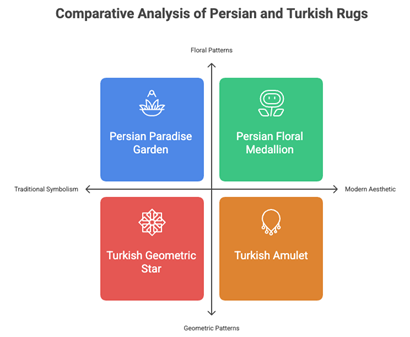
A comparison chart of Persian style rugs vs. Turkish rugs, highlighting origins, patterns, knots, and modern uses. The infographic shows a Persian floral medallion and a Turkish geometric star.
Credit: Infographic by Afra Rugs.
Persian Rug vs Turkish Rug: FAQ
- What makes a Persian style rug different from a Turkish rug?
A Persian style rug boasts floral, flowing patterns with uneven knots for intricate designs. Turkish rugs feature bold, geometric shapes with even knots, creating a striking, tribal look.
- Which rug suits a modern home better?
A large Persian rug adds elegance to formal spaces, while Turkish rugs suit cozy, eclectic rooms. Explore our Traditional Persian Rugs Collection for inspiration.
- Are Persian style rugs more intricate than Turkish rugs?
Persian style rugs use finer knot counts for intricate floral designs, while Turkish rugs focus on bold, simple patterns.
- What materials are used in these rugs?
Traditional Persian and Turkish rugs use wool or silk, but Afra Rugs crafts Persian style rugs with bamboo silk for a luxurious, modern feel.
- How do I choose between the two styles?
Consider your room’s vibe: Persian style rugs for elegance, Turkish rugs for rustic charm. Visit our Traditional Persian Rugs Collection for Persian-inspired options.
Conclusion :Persian Rug vs Turkish Rug
Persian style rugs and Turkish rugs tell rich stories of culture and art. Persia’s floral elegance contrasts Turkey’s geometric boldness.
Each offers unique beauty, transforming any room. A large Persian rug brings sophistication, while a Turkish rug adds rustic charm.
Afra Rugs captures this heritage with bamboo silk creations. Discover your perfect rug in our Traditional Persian Rugs Collection.


